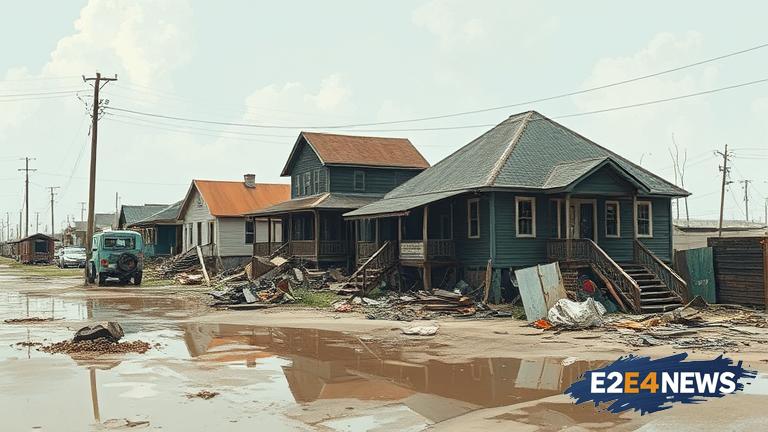Hurricane Katrina, one of the deadliest and costliest natural disasters in US history, made landfall on August 29, 2005, causing widespread destruction and chaos in the Gulf Coast region, particularly in New Orleans and Mississippi. The storm’s impact was felt across the country, with thousands of people displaced, injured, or killed. Robin Roberts, a renowned journalist, has revisited the affected areas 20 years after the disaster to assess the progress made and the challenges that still persist. During her visit, Roberts met with local residents, community leaders, and officials to gain a deeper understanding of the region’s recovery efforts. She found that while significant strides have been made in rebuilding and revitalizing the affected communities, many residents continue to struggle with the aftermath of the disaster. The city of New Orleans, in particular, has made notable progress in restoring its iconic landmarks, revitalizing its economy, and rebuilding its infrastructure. However, many neighborhoods still bear the scars of the storm, with abandoned homes, vacant lots, and a lingering sense of uncertainty. In Mississippi, the coastal towns of Gulfport and Biloxi were among the hardest hit, with entire communities reduced to rubble. Today, these towns have been largely rebuilt, but the memories of the disaster remain etched in the minds of the residents. Roberts also spoke with local business owners, who shared their stories of resilience and determination in the face of adversity. Despite the challenges, the region has seen a surge in tourism, with visitors drawn to its rich history, vibrant culture, and natural beauty. The oil and gas industry, a mainstay of the regional economy, has also experienced a significant rebound. However, the region still grapples with issues of poverty, inequality, and environmental degradation. The legacy of Hurricane Katrina serves as a reminder of the importance of disaster preparedness, infrastructure resilience, and community resilience. As the region continues to rebuild and recover, it is essential to acknowledge the progress made while also addressing the ongoing challenges. Roberts’ visit highlights the need for continued support and investment in the affected communities, as well as a renewed focus on addressing the root causes of vulnerability to natural disasters. The story of Hurricane Katrina and its aftermath serves as a powerful reminder of the human spirit’s capacity for resilience, adaptability, and hope. As the nation reflects on the 20th anniversary of the disaster, it is essential to honor the memories of those who lost their lives and to recommit to building a more resilient and sustainable future for all. The region’s recovery is a testament to the power of community, the importance of government support, and the resilience of the human spirit. However, much work remains to be done to ensure that the affected communities are equipped to face future challenges and disasters. By revisiting the devastation caused by Hurricane Katrina, we can gain a deeper understanding of the importance of disaster preparedness, infrastructure resilience, and community resilience. The story of Hurricane Katrina serves as a powerful reminder of the need for continued investment in disaster mitigation and recovery efforts, as well as a renewed focus on addressing the root causes of vulnerability to natural disasters. As we reflect on the 20th anniversary of the disaster, we must recommit to building a more resilient and sustainable future for all, one that prioritizes the needs of vulnerable communities and supports the long-term recovery of the affected regions.
